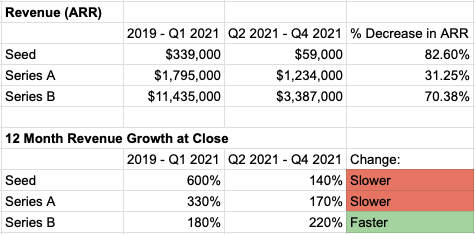Berlin-based Mayd, a startup that’s building an on-demand medicine delivery platform in Europe, has fast followed a chunky seed raise last fall — with a €30 million (~$34M) Series A funding round led by US investor Lightspeed Venture Partners.
Previous investors Target Global, 468 Capital and Earlybird Venture Capital also chipped into the Series A.
The round brings Mayd’s total raised to date, since the business was founded at the beginning of 2021, to €43M.
This early funding velocity looks akin to the pace investor cash has been flying into European on-demand grocery delivery platforms since the pandemic supercharged app-based delivery.
Grocery delivery startups have gone on to pull in some very beefy B and C raises in recent years, such as the almost $1BN Series C for Berlin’s Gorillas in October. So it’ll be interesting to see whether investors feel moved to plough similarly heady sums into more specialist on-demand startups, as founders work to slice and dice opportunities around app-based ordering and speedy local delivery. (See also, for example, the $20M Series A raise earlier this month for another German ‘instant delivery’ startup which is focused on premium, branded goods.)
For now, though, Mayd is keeping schtum on its valuation.
Demand for medicines and/or non-prescription products sold in pharmacies — all of which Mayd’s platform is being designed to deliver at speed — is fairly universal, if not quite up there with the daily human need to eat. So investors are likely attracted by the prospect of solid demand — assuming execution is strong.
That said, grocery as a category isn’t purely food; there are overlapping products vs what you can find in a pharmacy — so there is some direct inventory competition here, even as prescription medicines (which will be coming to Mayd) are a specialist type of order that isn’t typically possible via an ‘instant grocery’ delivery.
Plus, the convenience of in-app ordering and to-the-door delivery for meds may offer more of a pull vs general food delivery — given pharmacy shoppers are disproportionately likely to be feeling unwell or caring for someone who’s sick so may be especially keen to avoid leaving home to make an essential purchase.
Mayd’s delivery pledge in the cities where it operates is to get the order to your door within 30 minutes — for orders made between the hours of 8am and midnight (next day delivery thereafter).
It’s scaled out quickly from its first city, Berlin, also launching into Hamburg, Munich, Frankfurt am Main, Cologne and Düsseldorf. Across this footprint it currently offers access to 2,000+ prescription-free medicines and other pharmacy products, ahead of changes to the e-prescription system due this month which will enable it to also take orders for prescription drugs in Germany.
This pace of expansion means the startup has already grown to 100+ employees, as well as 350+ delivery riders — who it says are “permanently employed” (this means “directly contracted” with Mayd, i.e. not employed via subcontractors).
The Series A funds will be used to further step on the growth gas — with Mayd eyeing expanding into two more European markets over the new few months and scores more cities.
“We will use the new funds to invest in the company’s expansion in Germany and Europe, hiring key positions with a focus on technology, as well as in the further ramp up operations,” it tells TechCrunch. “Until the end of Q2 we plan to launch in two other markets in Europe and currently are looking at our best options.”
The startup says typical customers for its pharmacy order delivery service so far skew more female than male, and tend to fall into the 35-45 age range — having a focus on “convenience first”. (Aka: “Our customer base is urban, digital and appreciates our 24/7 service a lot.”)
Mayd also says its shoppers are ringing up bigger basket sizes than for online groceries.
But, well, medicines and ailment potions tend to be relatively expensive vs general groceries so that’s not too surprising. It is important to making the unit economics stack up for the speedy delivery though.
“Highly in demand are ailments against the common cold, OTC products for acute health problems like dry eyes. Beyond that everything for the needs of Mother & Child is popular amongst our customers,” it adds.
Mayd says it takes a commission on sales of non-prescription pharmacy products but does not charge for delivery.
For e-prescription orders it has said the model will either entail a delivery fee or listing fee.
Asked about the looming launch of e-prescriptions in Germany, Mayd claims it will be “the first company on the market to integrate the instant delivery service into our system”, adding: “This way we will be able to fully cover all needs in the area of health. Customers will have the chance to order their prescription medicines in an instant, in a convenient and time-saving way.”
Looking ahead, the startup says it expects to pass 100,000 customers over the course of this year as it expands out from (currently) six cities — soon to be seven, as it dials up service in Stuttgart next week — to more than 50 cities across its operational footprint in the first half of 2022.



